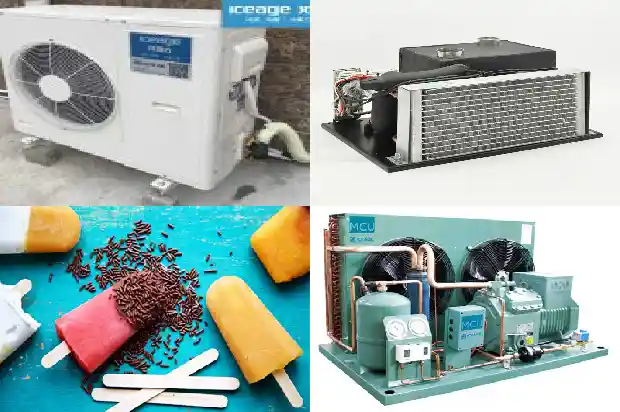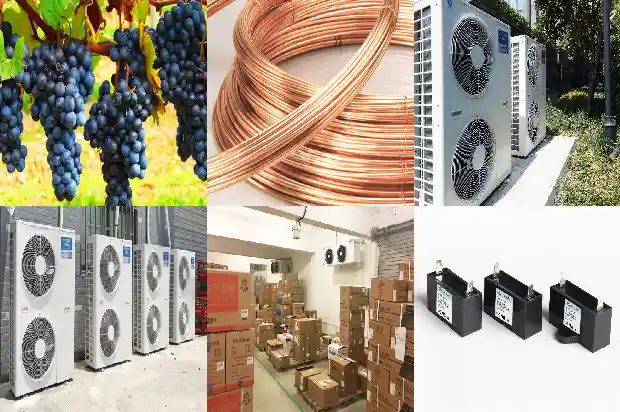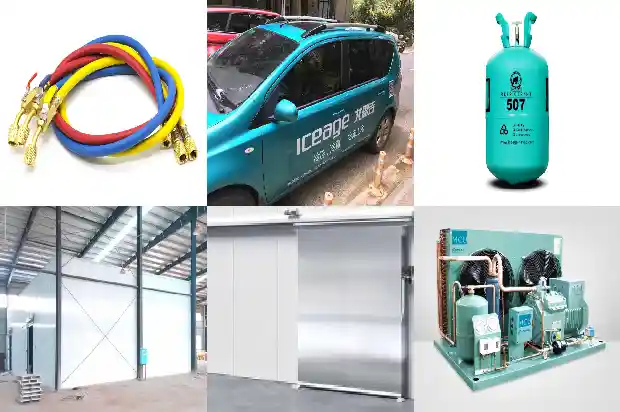Refrigeration System: Copper Pipe Welding and Flushing Operations
2025-02-25
- Oil - removal Treatment of Copper Pipes in R410A System
For copper pipes, oil - free copper pipes (which can be customized from the copper pipe factory) should be selected. If ordinary copper pipes (containing oil) are used for construction, then a gauze dipped in tetrachloroethylene solution must be used to clean the copper pipes. The purpose of cleaning the copper pipes is to remove the lubricating oil adhering to the inner wall of the copper pipes (the process oil used in the copper pipe processing). The composition of this lubricating oil is different from the lubricating oil used for R410A refrigerant, and the two will react to form precipitates, leading to complex system failures.
Special Reminder: It is strictly prohibited to use carbon tetrachloride for pipeline cleaning and purging operations, otherwise it will cause serious damage to the system! - Key Points and Precautions for Welding Operations
Welding of multi - split units requires nitrogen - filling protection to prevent the formation of oxide scale on the inner wall of copper pipes at high temperatures. It should be noted that during brazing, nitrogen must be continuously introduced into the refrigerant pipe, and it is ensured that the nitrogen flows through the weld point being operated until the welding is completed and the copper pipe is completely cooled.
During brazing, fill nitrogen into the refrigerant pipe to maintain a pressure of 0.2 kgf/cm² (after brazing, before the copper pipe is cooled, continue to blow nitrogen until it is cooled). For example, poor nitrogen - filling will result in the formation of an oxide film, causing system blockage and damaging the compressor.
During welding, pre - heat the copper pipe and the pipe joint evenly. During pre - heating, the flame should be as perpendicular to the surface of the copper pipe as possible, and pre - heat the pipe and the joint in a Z - shaped manner around the circumference alternately.
Brazing: During welding, the parts to be welded must be pre - heated. Heat the welding part of the copper pipe with a flame. When the copper pipe is heated to purplish - red, move the flame away and place the solder against the weld. The solder will melt and flow into the welded copper parts. The temperature after heating can be reflected by the color. For the welding of our refrigeration copper pipes (red copper) and fittings, a neutral flame is generally used.
Note: After the brazing operation is completed, do not rapidly cool the welded part with cold water. - Pipeline Purging
Pipeline purging uses pressurized gas to flush the pipeline (raw material pipes or welded components) to remove dust (since solid impurities cannot be blown out, pay attention to protection during the construction process) and moisture inside the pipe.
The main purposes of purging are as follows:
When the nitrogen replacement is insufficient, oxide powder or part of the oxide scale in the copper pipe can be removed.
When the pipe cover is not tightly sealed, dirt and moisture in the pipe can be removed.
Specific operations for purging:
Hold a suitable blocking material (such as a wooden block wrapped with white cotton cloth) against the copper pipe opening.
When the pressure increases to the point where it can no longer be resisted, suddenly release the pipe opening (one - time flushing).
Repeat the above steps for repeated purging (carry out multiple flushing).
To check for flushed dirt, loosely place a piece of white cotton cloth at the pipe opening. Occasionally, some moisture may be found, and the pipeline should be thoroughly dried.
The sequence of purging: When the pipeline has been connected into a system, the purging sequence is from far to near. That is, relative to the main unit, start from the pipe opening at the farthest end and operate in sequence towards the main unit (i.e., the sequence is ① - ② - ③ - ④ - ⑤ - ⑥).
Note:
When purging one of the pipe openings, all the pipe openings communicating with this pipeline must be blocked before purging.
After purging is completed, all the pipe openings communicating with the atmosphere must be sealed properly to prevent dust, debris, and water vapor from entering again.
Related Articles
- Have You Encountered the Three Common Problems of Refrigeration Compressors?
- How to Calculate Refrigeration Load? And What Are the Issues?
- What to Do if the Compressor of a Frozen and Refrigerated Display Cabinet Runs but the Refrigeration Effect Is Poor?
- Instructions for Welding and Drainage in the Installation of Refrigeration Equipment Pipelines
- Common Pressure Valves and Protection Devices in Refrigeration Units
- Precautions for Using Rotary Refrigeration Compressors
- What Misconceptions Should Be Avoided in Low - temperature Refrigeration System Repairs
- Essential for Maintenance! Parameters and Phenomena of Normal Operation of Refrigeration and Heating Systems
- Composition and Common Faults of Screw Refrigeration Compressors
- How to Read the High - and Low - Pressure Gauges of Refrigeration Air - conditioners?
- What is Cascade Refrigeration?
- Introduction to Control Valves in Refrigeration Systems
- Welding Equipment Used in Refrigeration System Maintenance
- Where Lie the Key Construction Technologies of the Ammonia Refrigeration System?
- What to Do When a Refrigeration Unit Malfunctions?
- Could a Tiny Copper Tube Cause a Multi - split Air Conditioner to Stop Cooling? Refrigeration Workers Must Pay Attention!
- Has Your Refrigeration System Experienced "Oil Carry - over"?
- Basic Knowledge of Valve - type Components in Refrigeration Systems (Technical Sharing)
